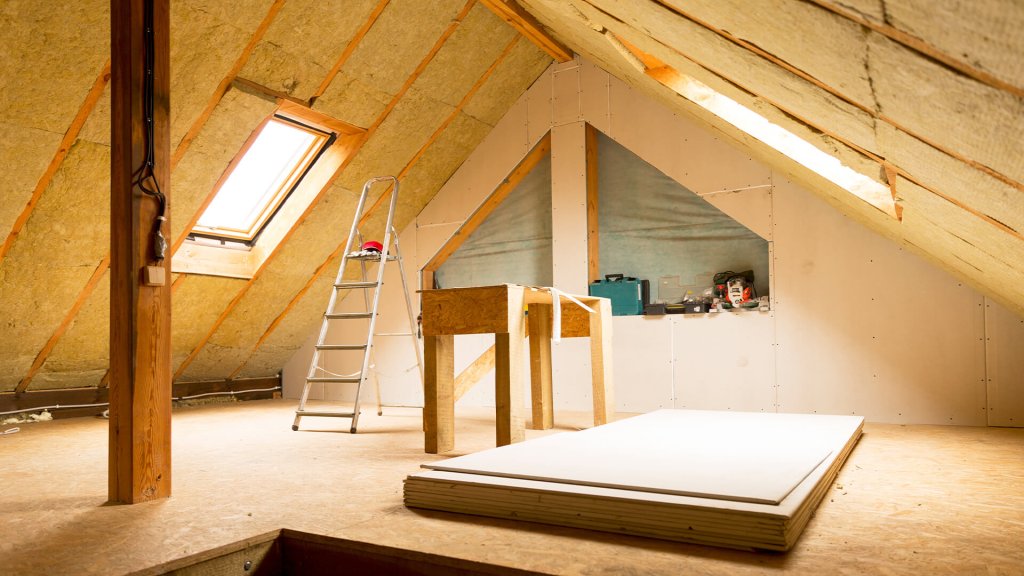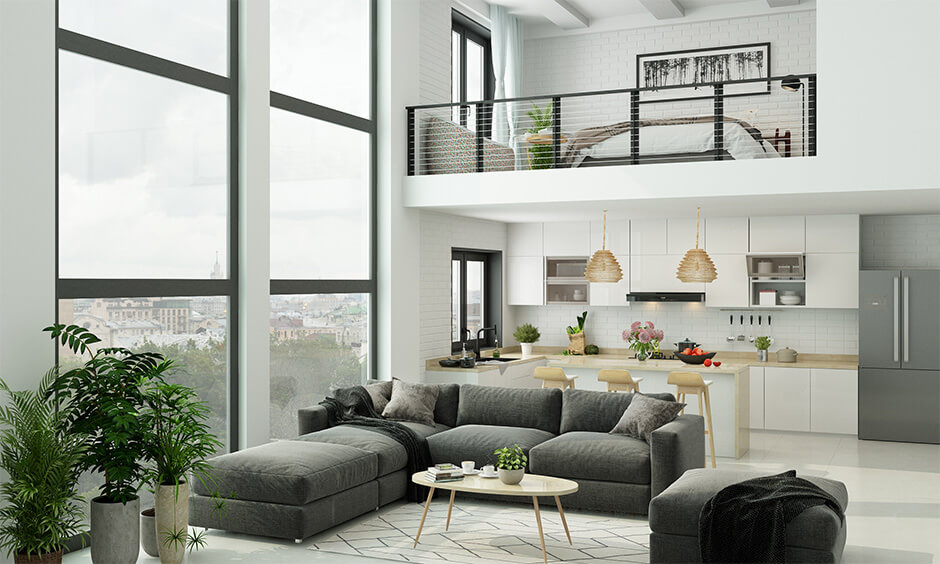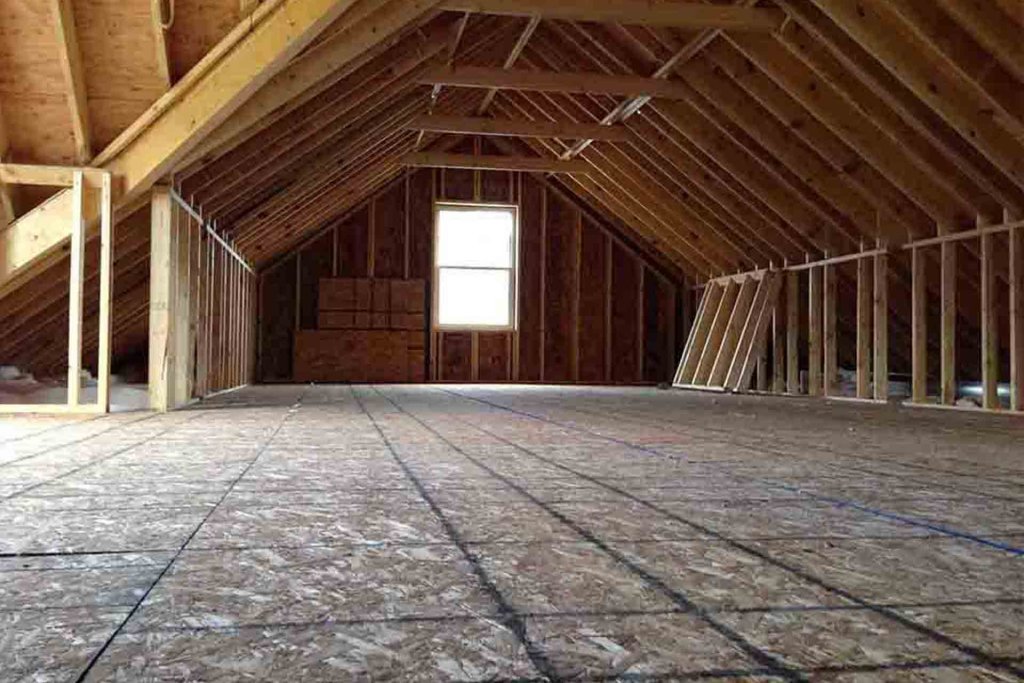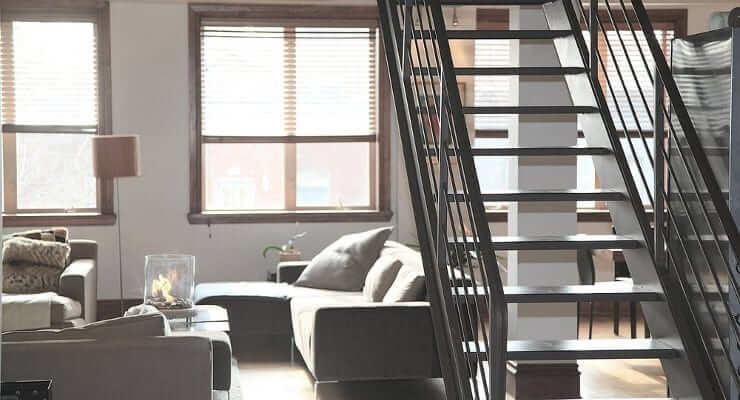Explore our comprehensive guide to perfecting your London loft conversion project. Whether you’re envisioning a new bedroom, a home office, or a cozy retreat, this guide offers expert tips and tricks to seamlessly transform your loft into a stunning and functional living space.
A loft conversion is an excellent way to maximize the potential of your home, and London is known for its charming loft spaces. By following the steps outlined in this guide, you’ll be able to navigate the conversion process successfully and create a space that suits your lifestyle and design preferences.
From understanding the basics of loft conversions and obtaining planning permission to designing your dream loft space and adding the finishing touches, we’ll cover all the essential aspects of the conversion process. Whether you’re a DIY enthusiast or prefer to work with professionals, this guide will equip you with the knowledge to ensure a smooth and successful project.
So, let’s dive into the world of London loft conversions and start perfecting your dream space!
Key Takeaways:
- Transform your London loft into a stunning and functional living space.
- Understand the basics of loft conversions, including planning permission and building regulations.
- Design your dream loft space by maximizing the available space and harnessing natural light.
- Find the right professionals for your loft conversion project.
- Navigate the construction phase with ease by understanding the project timeline and selecting suitable materials.
Understanding the Basics of Loft Conversions
Before embarking on your loft conversion journey, it’s essential to grasp the basics. This section will guide you through the different types of loft conversions, the potential costs involved, and the important considerations such as planning permission and building regulations.
Loft conversion basics involve understanding the various options available to you. Depending on your needs and the existing structure of your home, you can choose from options such as dormer, mansard, hip-to-gable, or rooflight conversions.

Did You Know? A dormer loft conversion is the most popular type, as it offers additional floor space and natural light, creating a spacious and welcoming environment.
Once you have an idea of the type of conversion you desire, it’s crucial to familiarize yourself with the planning permission and building regulations associated with loft conversions. Planning permission ensures that your project complies with local guidelines, while building regulations oversee structural integrity, fire safety, and energy efficiency.
Expert Tip: It’s important to engage with a qualified architect or loft conversion specialist early on to assess your project’s compliance with planning permission and building regulations. They can guide you through the process and help streamline your conversion.
Understanding the basics of loft conversions is the foundation for a successful project. It enables you to make informed decisions, estimate costs accurately, and avoid potential setbacks. Now that you have an overview of the essentials, you’re well-equipped to embark on your loft conversion journey with confidence.
Designing Your Dream Loft Space

The key to a successful loft conversion lies in the design. It’s not just about adding extra square footage; it’s about creating a space that maximizes every inch, harnesses natural light, and reflects your personal style. In this section, we’ll walk you through the process of designing your dream loft space, ensuring it’s both functional and visually appealing.
Maximizing Space
Lofts are often characterized by their unique shape and limited floor area. To make the most of the available space, consider clever storage solutions, such as built-in cabinets and wardrobes. Utilize underused areas like eaves and alcoves by incorporating bespoke shelving or seating. By taking advantage of vertical space, you can free up valuable floor area, making your loft feel more spacious and organized.
Another effective way to maximize space is to create multi-functional areas. For example, a built-in desk can double as a vanity or a workspace. A sofa bed in the living area can transform the space into a guest bedroom when needed. By carefully planning the layout and choosing versatile furniture, you can ensure every corner of your loft serves a purpose.
Harnessing Natural Light
Natural light is an essential element in any loft conversion design. It not only enhances the overall aesthetic but also creates a sense of openness and airiness. To maximize natural light, consider adding larger windows or skylights. These can be strategically placed to capture the most sunlight and provide stunning views of the surrounding area.
“Natural light has the power to transform a space, making it feel brighter and more inviting. When designing your loft, consider incorporating windows or skylights to harness the beauty of natural light.” – Interior Design Expert
In addition to maximizing windows, think about using light colors for your walls and furnishings. Light tones reflect and amplify natural light, making your loft feel even brighter. Mirrors are also a fantastic tool for bouncing light around the room and creating an illusion of space.
Your choice of window treatments is equally important. Opt for sheer curtains or blinds that allow light to filter through while maintaining privacy. This way, you can enjoy an abundance of natural light without sacrificing comfort or style.
Design Tips and Inspiration
If you’re looking for design inspiration for your loft conversion, there are countless ideas to explore. Consider creating a cozy reading nook tucked away in a corner, complete with a comfortable armchair and a floor lamp. Or transform your loft into a serene retreat by incorporating a freestanding bathtub or a tranquil seating area.
When it comes to loft design, the possibilities are endless. Whether you prefer a modern and minimalistic aesthetic or a cozy and rustic vibe, there are design styles and trends to suit every taste. Take inspiration from interior design magazines, online platforms, and even local showrooms to discover the perfect design elements that resonate with your vision.
Remember, the most successful loft conversions are those that prioritize both functionality and beauty. By maximizing the available space and harnessing natural light, you can create a loft that not only meets your needs but also becomes the favorite part of your home.
Finding the Right Professionals for the Job

A successful loft conversion project requires the expertise of qualified professionals who can bring your vision to life. Whether it’s architects, builders, or other specialists, finding the right professionals is crucial for a smooth and successful conversion process. Here are some insights on how to find the best team for your loft conversion:
- Do your research: Start by researching and gathering a list of loft conversion professionals in your area. Look for reputable companies or individuals with a track record of delivering quality work.
- Ask for recommendations: Reach out to friends, family, or colleagues who have recently undergone a loft conversion. Ask for their recommendations and inquire about their experience with the professionals they worked with.
- Check portfolios and reviews: Take the time to review the portfolios and online reviews of the professionals you are considering. This will give you an idea of their style, expertise, and the satisfaction level of their previous clients.
- Interview multiple professionals: Once you have a shortlist of potential professionals, schedule interviews to discuss your project in detail. Ask about their experience, credentials, and if they have previously worked on loft conversions similar to yours.
- Request references: Don’t hesitate to ask for references from previous clients. Contact these references to inquire about their experience working with the professionals and whether they would recommend them.
Remember, it’s important to choose professionals who not only have the technical skills but also align with your style, communication preferences, and project goals. Clear communication and proper project management throughout the conversion process are key to ensuring a successful outcome.
Now that you have an idea of how to find the right professionals, let’s take a look at the role they play in bringing your loft conversion vision to life:
“Working with skilled architects, builders, and other professionals is crucial for a successful loft conversion project. Their expertise and attention to detail will ensure that your vision becomes a reality, creating a functional and beautiful space.”
| Professionals | Roles and Responsibilities |
|---|---|
| Architects |
|
| Builders |
|
Navigating the Construction Phase
Once the design is finalized, it’s time to embark on the construction phase of your London loft conversion project. This phase is a crucial step towards transforming your loft into the stunning and functional living space of your dreams.
During the construction phase, there are several key steps that you need to navigate in order to ensure a successful conversion. These steps include:
- Preparing the site: Before construction can begin, the site needs to be properly prepared. This involves clearing out any existing materials or debris and ensuring that the space is clean and ready for construction.
- Selecting materials: The choice of materials plays a significant role in the overall quality and durability of your loft conversion. It’s important to select materials that not only meet your aesthetic preferences but also offer the necessary strength and functionality.
- Managing the project timeline: A well-planned project timeline is essential for keeping the construction phase on track. It outlines key milestones, deadlines, and dependencies, ensuring that the project progresses smoothly and efficiently.
During the construction phase, it’s crucial to work closely with your team of professionals, including builders, contractors, and architects. Effective communication is key to ensure that everyone is on the same page and that any issues or concerns are addressed promptly.
Remember, construction projects can be complex and may encounter unforeseen challenges along the way. Having a clear understanding of the construction phase and actively managing the process will help you overcome obstacles and maintain control over your loft conversion project.
| Key steps in the construction phase | Duration |
|---|---|
| Site preparation | 1-2 weeks |
| Material selection | Varies based on customization |
| Construction and installation | Several weeks to several months |
| Final inspections and finishing touches | 1-2 weeks |
It’s important to note that the duration of the construction phase can vary depending on the complexity of your loft conversion project and external factors such as weather conditions. Regular communication with your team will help you stay informed about the progress and any potential delays.
By understanding and actively navigating the construction phase, you can ensure that your London loft conversion project stays on track and results in a beautifully transformed living space.
Adding the Finishing Touches
The success of your London loft conversion lies in the attention to detail when it comes to the finishing touches. It’s these final elements that will truly bring your space to life, creating a comfortable and stylish living area that you’ll love.
Interior Design: Adding Personality to Your Loft
Interior design plays a crucial role in transforming your loft conversion into a unique space that reflects your style and personality. Consider the overall aesthetic you want to achieve and choose furniture, colors, and textures that complement the architecture and layout of your loft. Optimize the available space by selecting furniture pieces that are both functional and visually appealing.
Don’t forget to pay attention to the smaller details. Add artwork, decorative accents, and personal touches that reflect your taste and create a welcoming atmosphere.
Remember, your loft is a blank canvas, waiting for your creative vision to be realized.
Heating and Insulation: Ensuring Comfort and Energy Efficiency
When it comes to loft conversions, proper heating and insulation are essential for creating a comfortable and energy-efficient living space. A well-insulated loft will keep the temperature regulated, both in winter and summer, while reducing energy consumption.
Consider installing efficient insulation materials such as spray foam or rigid insulation panels. These options provide effective thermal insulation, preventing heat loss and ensuring a cozy environment year-round.
Additionally, explore different heating options to keep your loft warm during the colder months. Underfloor heating is a popular choice for loft conversions as it provides efficient heating without taking up valuable floor space. Alternatively, you can opt for radiators or even a modern fireplace as a stylish focal point and a source of warmth.
Finishing Materials: Elevating the Look and Feel
The choice of finishing materials can greatly impact the overall look and feel of your loft conversion. Consider using high-quality materials that add both visual appeal and durability to your space.
For the flooring, explore options such as hardwood, engineered wood, or luxurious carpets. These materials not only elevate the aesthetic but also provide a comfortable and inviting feel underfoot.
Add a touch of elegance to your walls with paint, wallpaper, or even exposed brickwork. Experiment with textures and colors to create a unique atmosphere that suits your style and preferences.
When it comes to lighting, incorporate a mix of natural light and artificial lighting solutions to create a well-lit and welcoming space. Skylights, roof windows, and strategically placed light fixtures can make your loft conversion feel bright and open.
By carefully considering interior design, heating and insulation, and the choice of finishing materials, you’ll be able to add the perfect finishing touches to your London loft conversion. Your completed space will not only be functional but also a reflection of your personal style and a comfortable haven for years to come.
Conclusion
As you reach the end of this ultimate guide, you’re now equipped with the knowledge and insights to perfect your London loft conversion. Throughout the previous sections, we have covered every aspect of the loft conversion process, from understanding the basics to designing your dream space and navigating the construction phase.
By following the expert tips and tricks provided, you have gained a roadmap to transform your loft into a stunning and functional extension of your home. Imagine the endless possibilities that your London loft holds, whether it’s an additional bedroom, a home office, or a relaxing retreat.
Remember, embracing the potential of your loft is the first step towards creating a space that you’ll love to live in for years to come. So don’t hesitate to start your loft conversion project today and unlock the true value of your London property. We wish you every success on your journey!
FAQ
Can I convert my loft in London into a living space?
Yes, converting a loft in London into a living space is a popular option for homeowners looking to maximize their property’s potential. However, it’s important to check with your local planning department to ensure that you meet all the necessary requirements and obtain any required planning permission.
How much does a loft conversion in London cost?
The cost of a loft conversion in London can vary depending on various factors such as the size of the loft, the complexity of the conversion, the materials used, and your location. On average, a loft conversion in London can cost between £20,000 to £60,000.
Do I need planning permission for a loft conversion in London?
In many cases, loft conversions in London can be carried out under permitted development rights, which means you may not need to obtain planning permission. However, there are certain limitations and conditions that need to be met. It’s always best to consult with your local planning department or a professional architect to determine if planning permission is required for your specific project.
How long does a loft conversion project take?
The duration of a loft conversion project in London can vary depending on the complexity of the conversion, the size of the loft, and other factors. On average, a loft conversion project can take between 8 to 12 weeks, but it’s essential to note that each project is unique and may require more or less time.
Should I hire professionals for my loft conversion project?
It is highly recommended to hire professionals for your loft conversion project in London. Architects, builders, and other experienced professionals can provide the necessary expertise, guidance, and ensure that the project is completed to the highest standards. They will also ensure that all necessary building regulations are met, giving you peace of mind throughout the process.
How can I maximize the space in my loft conversion?
To maximize the space in your London loft conversion, consider incorporating clever storage solutions such as built-in closets or under-stair storage. Opting for bespoke furniture and using multi-functional pieces can also help make the most of the available space. Utilizing vertical space with bookshelves or wall-mounted storage can also be effective.
What are the essential elements to consider in loft conversion interior design?
When it comes to loft conversion interior design in London, it’s important to consider factors such as lighting, color scheme, furniture layout, and overall functionality. Maximizing natural light with skylights or large windows can make the space feel brighter and more spacious. Choosing neutral or light-colored tones can also help create an airy and open atmosphere.
What heating and insulation options are suitable for a loft conversion?
Proper heating and insulation are crucial for a comfortable and energy-efficient loft conversion in London. Options such as underfloor heating, radiators, or a combination of both can provide effective heating. Insulation materials, such as cavity wall insulation or loft insulation, should be selected to meet building regulations and ensure optimal energy efficiency.

